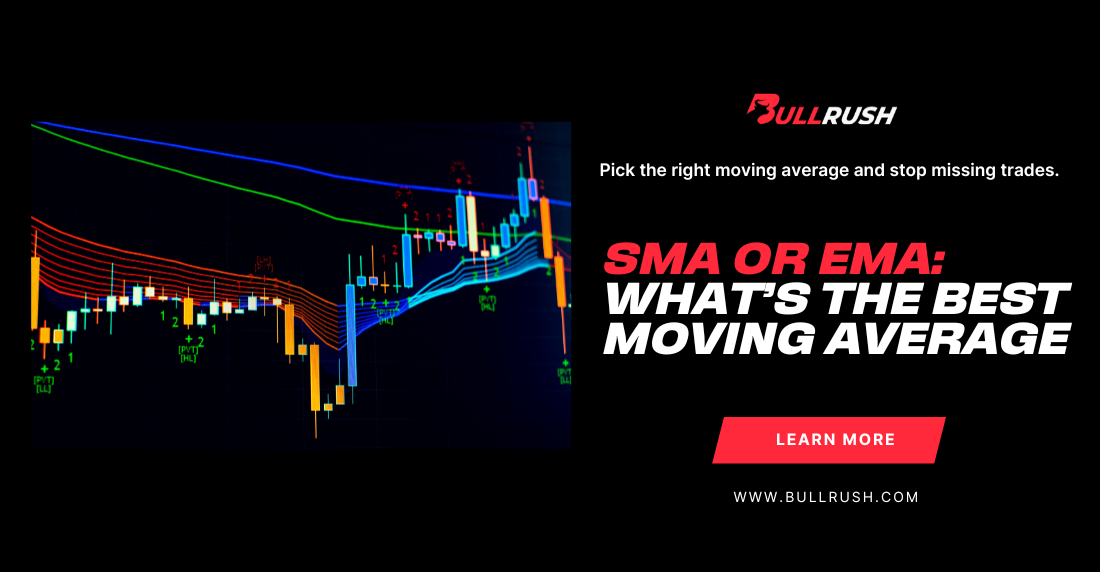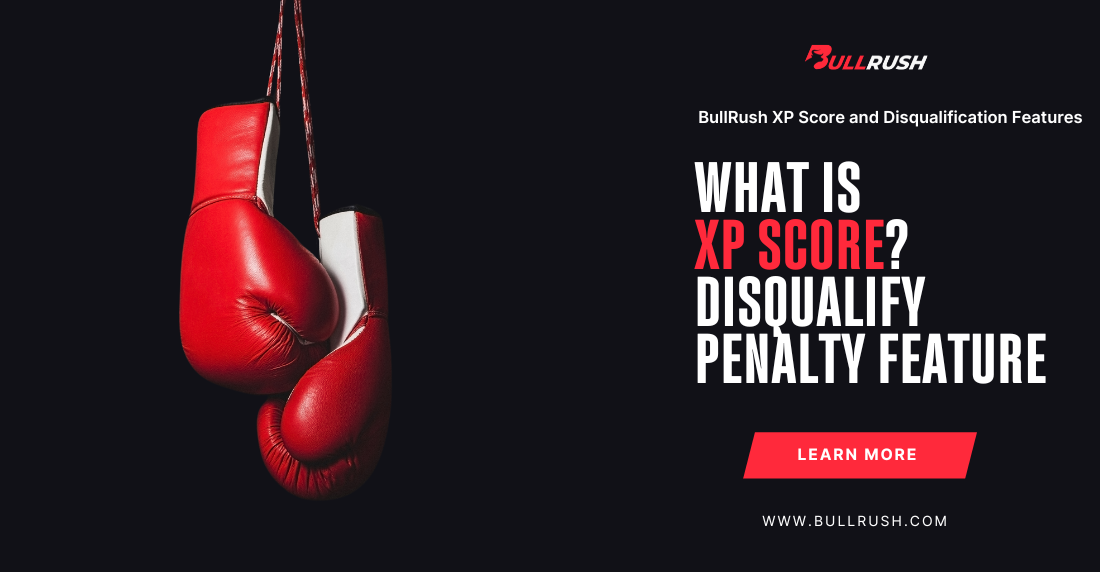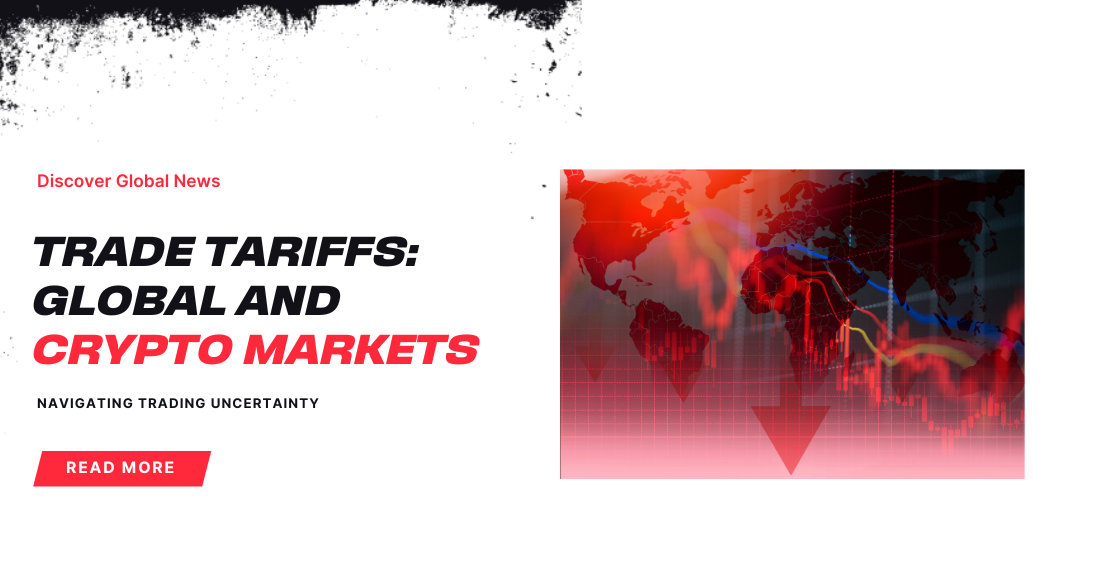
SMA or EMA: What’s the Best Moving Average for Trading
SMA strolls. EMA sprints. Use the wrong one, and you’ll always be late to the party, or worse, show up after it’s over. So, which one should you choose: SMA or EMA?
Moving averages are your GPS in the chaos of a price chart. They don’t predict the future, but they do show you where momentum is building, when trends are shifting, and where smart money might be leaning. But here’s where most traders slip: they treat all moving averages the same.
While Simple Moving Average (SMA) and Exponential Moving Average (EMA) look similar, they act very differently. One gives you a calm, steady pulse of the market. The other reacts fast and fires off signals in real-time. Knowing when to use each is what separates reactive traders from strategic ones.
Your moving average choice matters, no matter if you’re scalping intraday breakouts or holding for multi-day swings. Let’s walk through the differences: visually, practically, and strategically, so you can sharpen your edge on the charts and the BullRush leaderboard.
1. Simple Moving Average (SMA): Smooth and Steady
Imagine SMA as the long-lens camera of your trading setup. It zooms out, cuts through the noise, and shows you the overall direction with calm precision. A 50-day SMA doesn’t care what happened yesterday; it cares about the average flow over time.
It’s calculated by taking the average closing price over a set number of days; every data point gets equal weight. That’s great for smoothing out choppy conditions, but it also means you’ll be a step behind fast-moving price action. On trending stocks? It shines. On volatile, news-driven names? Not so much.
Tip: Use SMAs on higher timeframes to confirm trend direction. When price is dancing above a rising 200-day SMA, the bulls are still in control.
Recap:
- Equal weight to all price points
- Slower response to recent changes
- Great for long-term trend confirmation
- Less sensitive to price spikes and volatility
2. Exponential Moving Average (EMA): Fast and Focused
Now picture EMA as a short-lens action camera: it’s glued to price and captures every move in high definition. The EMA assigns more weight to recent candles, which means it feels the market turning before the SMA ever sees it coming.
This is the go-to for momentum traders. Watching the 9 EMA climb up a breakout candle? That’s your entry window. Seeing price snap below the 21 EMA? That could be your exit. EMA lets you trade with the heartbeat of the market, but that heartbeat can stutter in sideways chop.
Tip: Combine EMAs with a momentum filter, like RSI or MACD, to stay out of whipsaws and focus on clean setups.
Recap:
- Weights recent prices more heavily
- Faster response to new price moves
- Useful for short-term trades and breakout strategies
- Prone to more false signals in range-bound markets
3. SMA or EMA: Strategy, Timing, and Signal Accuracy
So which one’s better? Trick question. They serve different roles.
The SMA is your anchor: it tells you the overall direction. The EMA is your trigger: it tells you when to act. Smart traders use them together. Think of the 200 SMA as your filter: only go long if the price is above it. Then use the 9 EMA to time your entries like a sniper.
One smooths. One sharpens. Use both, and you’re not guessing anymore, you’re navigating.
Tip: Run a strategy test: trade only when price is above the 200 SMA and crosses above the 9 EMA. Backtest it. Then try it in BullRush trading challenges and watch your win rate climb.
Recap:
- SMA = trend filter; EMA = entry/exit trigger
- Crossovers work best when both confirm direction
- Combining both can improve signal reliability
- Choose based on your timeframe and trade style
4. BullRush Traders: What Works in Competition
In BullRush competitions, trends emerge: literally and figuratively. We’ve watched traders who lean on the EMA climb the ranks in short-format contests where reaction speed matters.
Think one-day sprints, news-fueled breakouts, crypto volatility. EMA wins those races.
But in longer competitions, like our Profit Sprint, where trends play out over days, it’s the SMA-based strategies that lead. They’re slower, yes, but they filter the noise, keep traders in strong positions, and avoid overtrading.
Top traders often combine both. SMA for structure. EMA for entries. The result? More precision. Fewer mistakes. Higher scores.
Tip: In your competitions, log which moving average you’re using and how it impacts your timing. The data will speak for itself.
Recap:
- EMAs help in short-term, high-speed competitions
- SMAs excel in longer trend-based challenges
- Winning traders often combine both
- Competitions are a great place to test moving average setups
The Best Moving Average Is the One That Fits Your Style
SMA is the old-school general: patient, steady, and focused on the long game. EMA is the special ops team: fast, responsive, and ready to strike.
Want to be a stronger trader? Don’t just pick one; master both. Learn how they behave, when they shine, and how they fit your trading strategies. Because in trading, timing isn’t everything… It’s the only thing.
And there’s no better way to practice than with BullRush. Test SMA-only strategies. Test fast EMA systems. Mix and match. Track your edge and compete against other sharp minds.
👉 Join a BullRush today and put your moving average mastery to the test. The markets don’t wait; neither should you.
FAQs
Q: What’s the main difference between SMA (Simple Moving Average) and EMA (Exponential Moving Average)?
SMA gives equal weight to all price data, while EMA emphasizes recent prices for quicker response.
Q: Is EMA better than SMA?
Not necessarily. Most would say EMA is faster, but SMA is more stable. It depends on your trading style and timeframe.
Q: Can I use both SMA and EMA in one strategy?
Yes! Many traders use SMA for trend filtering and EMA for signal generation.
Q: Which moving average works best for day trading?
EMAs (like the 9 or 21 EMA) are more responsive and typically work better for intraday trading.
Q: What’s the most common SMA and EMA period?
Common choices: 50 and 200 for SMA; 9, 21, and 34 for EMA. Test to see what fits your system.



